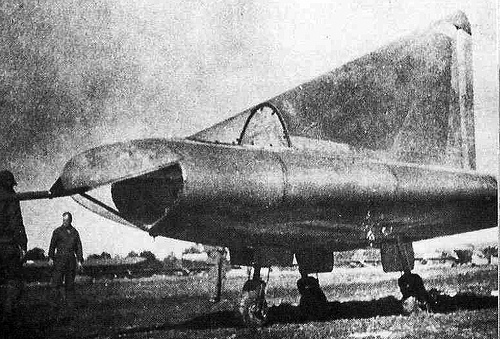Aerodynamically, there is a somewhat significant difference between transonic and/or barely-supersonic and mach 2. In modern fighter aircraft, it is easy to get into the mach 1.X range. Even subsonic trainers like the T-45, if pointed straight down from very high altitude, you can probably get through the number before you hit thicker air in the teens where you start slowing down again. I'd imagine the same held true for WWII fighters doing dive bomb attacks. However, getting much beyond mach 2.01 really takes a dedicated design, and some specific aerodynamic traits. Not that it applies to this coal ramjet powered prototype, but as an example, every fighter designed to exceed mach 2 uses some form of variable geometry intake/inlet……i.e. MiG-21, F-4, F-111, F-14, F-15. Those that don't have such a design feature, i.e. F/A-18, F-16 (even B-1B when compared to B-1A), pretty much hit a wall in the mid to high Mach 1.X range. Obviously there are a lot of other design elements, I just use that as an example of the added complexity of getting to Mach 2.6 without things disintegrating around you. Got it, that it claims to have been only "stable at mach 2.6", whatever that means and whatever assumptions went into that statement……..however designing a dart that doesn't depart in a wind tunnel at design Vmax doesn't really equate to building a useable airplane that can do things like take off, land, or have any form of acceptable flying qualities. Just my .02




